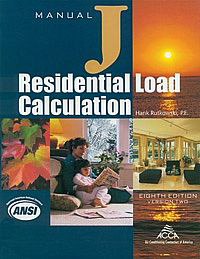
Building codes require heating and cooling loads to be calculated with the procedures of ACCA Manual J.
“… building loads calculated in accordance with ACCA Manual J or other approved heating and cooling calculation methodologies. “ IRC 2009 M1401.3
ACCA Manual J is the industry recognized method for determining heating and cooling loads in Archie Missouri. No more basing HVAC equipment size on “rule of thumb.” – The ACCA book on Residential Load Calculation (Manual J) is 556 pages long. It is filled with extensive numbers, equations, tables and worksheets.
After one flip through this tome, you’re thinking “just give me the bottom line.”
Let me do your Manual J load calculations for you, available in Archie Missouri
Use my 35 years of commercial and residential load calculating and building energy analysis to your benefit.
- No buying expensive software.
- No wasting hours of trying to understand input tables and charts.
I use my own worksheet based procedures, using the computer only to keep the math correct. This way I have full control over all inputted information and how it is used in the procedure. I can answer technical questions. Instead of saying “well that’s what the program says.”
Click here for the lowest price
Use my simple two step procedure.
- Send me drawings and construction details. More info here.
- Wait for my results, usually a day or two.
Complying with building codes has never been so easy and inexpensive.
ACCA Manual J Anaysis is now available in Archie Missouri.
For more on ACCA Manual J go here.
Go here for more on Air Conditioning Contractors of America.
